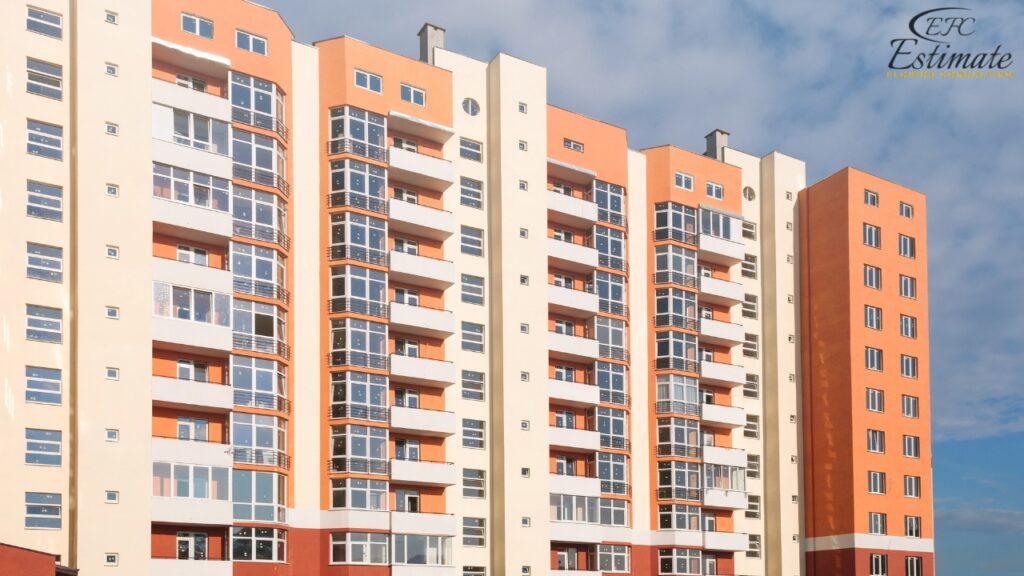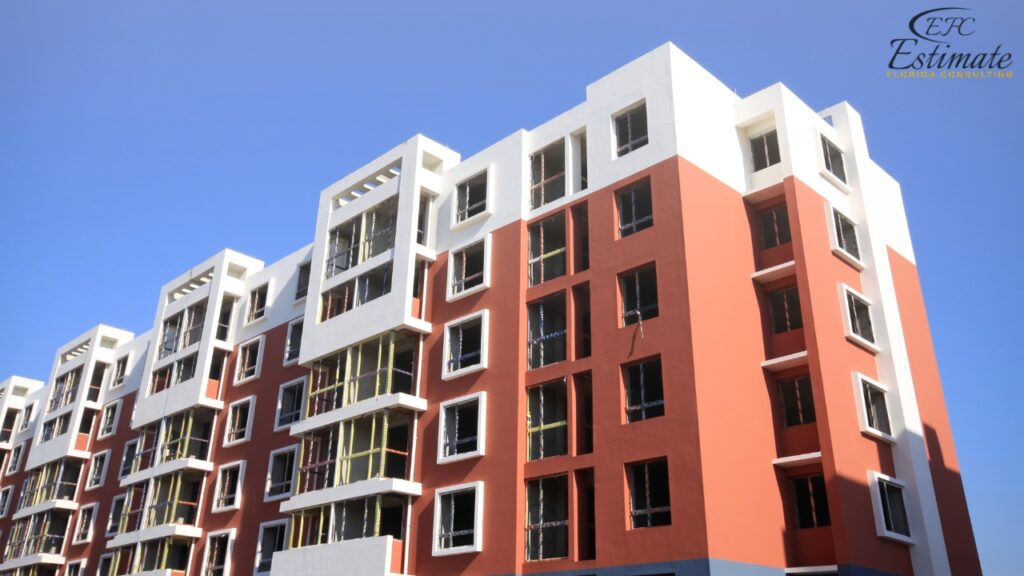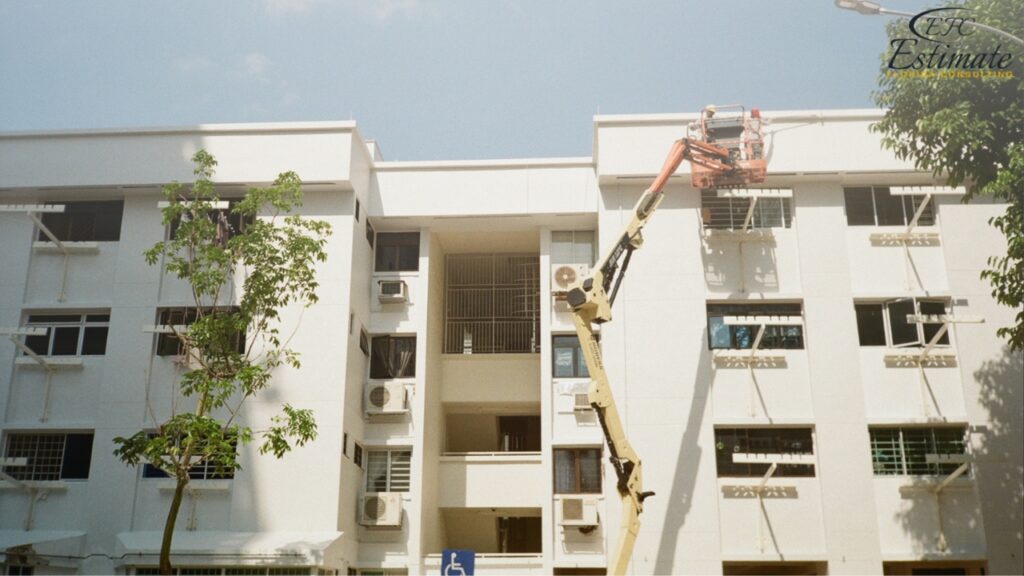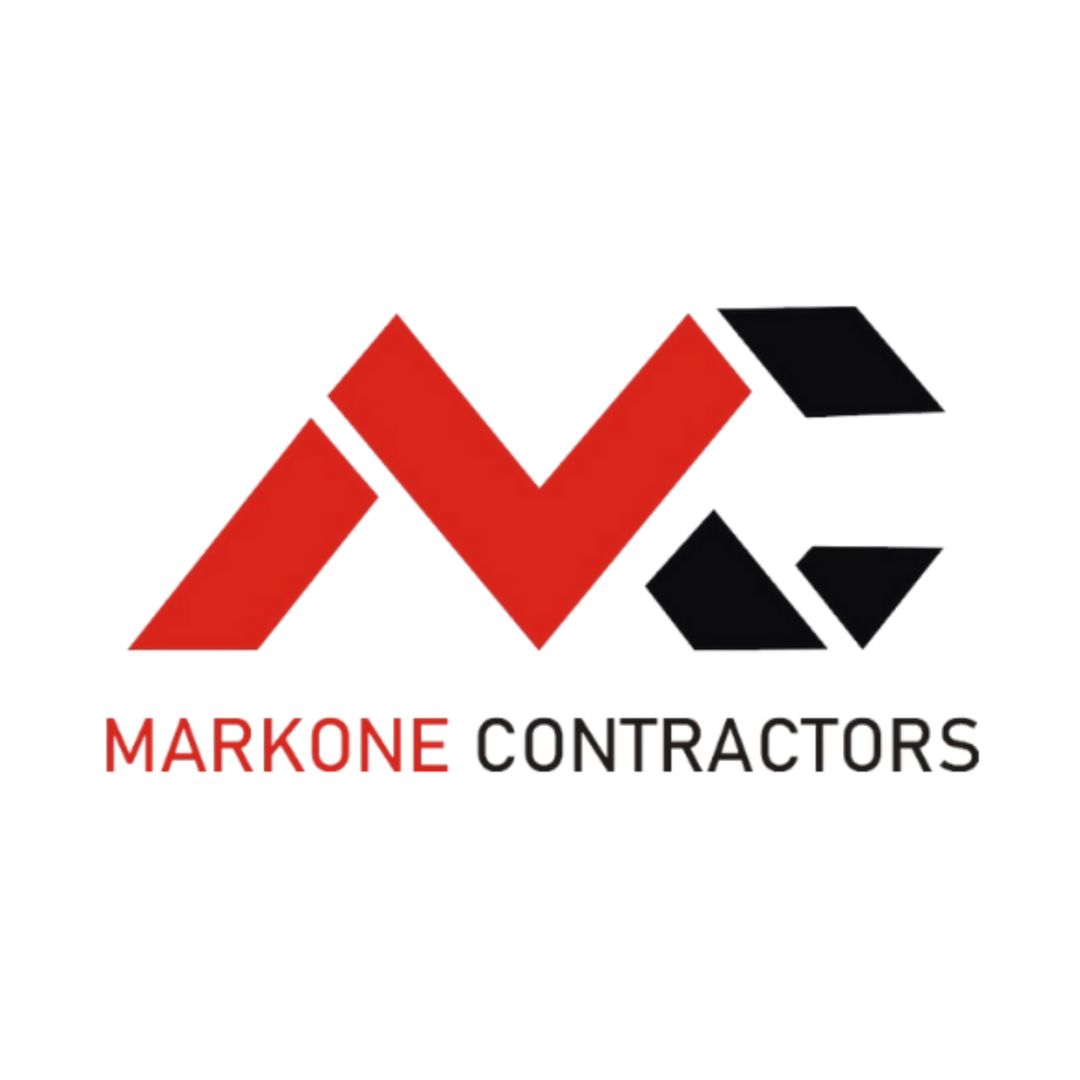How Much Does It Cost to Paint an Apartment Complex Exterior?
Painting the exterior of an apartment complex is a significant investment that can greatly enhance its curb appeal and protect it from environmental damage. The cost of this project varies depending on several factors, including the size of the complex, the condition of the existing paint, and the type of paint used. For a small complex, costs can range from $14,000 to $42,000, while a medium-sized complex might cost between $42,000 and $98,000. Large complexes can see costs from $98,000 to $210,000. These estimates include surface preparation, repairs, priming, and painting.

The type of paint also impacts the cost; for example, acrylic paint costs around $42 to $98 per gallon, latex paint ranges from $28 to $70 per gallon, and oil-based paint costs between $56 and $126 per gallon. Opting for higher quality paint may increase initial costs but offers better durability and protection, potentially saving money on future maintenance.
Understanding the Basics
What is Included in Exterior Painting?
When we talk about exterior painting, it’s not just about slapping some paint on the walls. The process includes several key steps:
- Surface Preparation: Cleaning the surfaces to remove dirt, mildew, and loose paint. This might involve power washing, scraping, and sanding. Proper surface preparation is essential for ensuring that the new paint adheres well and lasts longer. Neglecting this step can lead to peeling and flaking paint within a few months.
- Repair Work: Fixing any damaged areas such as cracks or holes in the walls. This ensures a smooth and even surface for painting. Repairs might include patching holes, filling cracks, and replacing damaged siding or trim. Addressing these issues beforehand prevents further deterioration of the building’s structure.
- Priming: Applying a primer to the surfaces. This helps the paint adhere better and last longer. Primer also seals the surface, providing a uniform base for the topcoat. Using a high-quality primer can enhance the durability and appearance of the final paint job.
- Painting: Applying the paint, usually in multiple coats to ensure even coverage and durability. The number of coats needed can vary depending on the paint type and color. Darker colors and higher-quality paints often require fewer coats.
- Finishing Touches: Painting details like trim, doors, and any decorative elements. These finishing touches add to the overall aesthetic appeal of the complex. Attention to detail in this step can make a significant difference in the final look.
Each of these steps is crucial for a high-quality and long-lasting paint job. Skipping or rushing any step can compromise the overall results, leading to additional costs down the line.
Types of Paint Used
The type of paint you choose can significantly impact the cost and longevity of the project. Here are the common types of paint used for exterior projects:
- Acrylic Paint: Known for its durability and flexibility, acrylic paint is water-based and resistant to cracking. It costs around $42 to $98 per gallon. Acrylic paint is also easy to clean and resists fading, making it a popular choice for exterior applications.
- Latex Paint: Also water-based, latex paint is easy to clean and dries quickly. It’s generally less expensive, costing between $28 and $70 per gallon. Latex paint is versatile and can be used on a variety of surfaces, including wood, stucco, and brick. It is also eco-friendly due to its low VOC (volatile organic compounds) content.
- Oil-Based Paint: This type of paint is durable and offers a smooth finish, but it takes longer to dry and requires mineral spirits for cleanup. It costs between $56 and $126 per gallon. Oil-based paint is ideal for areas that need a tough, moisture-resistant coating, such as trim and doors. However, it has a stronger odor and longer drying time compared to water-based paints.
Choosing the right type of paint involves considering factors such as the building’s material, climate conditions, and the desired finish. Consulting with a professional can help you make an informed decision that balances cost and performance.
Factors Influencing the Cost
Size of the Apartment Complex
The size of the apartment complex is a major factor in determining the overall cost. Larger complexes require more paint and more labor, which increases the cost. For example:
- Small Complex (20,000 sq ft): $14,000 – $42,000. A small complex typically consists of a few buildings with limited surface area, making the project more manageable and less costly.
- Medium Complex (50,000 sq ft): $42,000 – $98,000. Medium-sized complexes have more buildings and common areas, which add to the painting requirements and overall cost.
- Large Complex (100,000 sq ft): $98,000 – $210,000. Large complexes include multiple buildings, extensive common areas, and additional architectural details, all of which contribute to higher material and labor costs.
The size not only affects the amount of paint needed but also impacts the time required to complete the project. Larger projects may take several weeks or even months, depending on the complexity and weather conditions.
Condition of the Existing Paint
If the current paint is in poor condition, it will require more prep work. This includes extensive scraping and sanding to remove loose paint, filling cracks, and possibly repairing damaged surfaces. The cost for this additional work can range from $1.40 to $4.20 per square foot.
A well-maintained surface with minimal damage will require less preparation, reducing the overall cost. However, if the existing paint is peeling, bubbling, or showing signs of mold and mildew, extensive preparation will be necessary to ensure the new paint adheres properly and lasts longer.

Type of Paint and Quality
Higher quality paints cost more but provide better coverage, durability, and protection against weather elements. Here’s a cost comparison:
Paint Type | Cost per Gallon |
Acrylic | $42 – $98 |
Latex | $28 – $70 |
Oil-Based | $56 – $126 |
Using high-quality paint can add to the initial cost but often reduces the frequency of repainting, thus saving money in the long run. High-quality paints also offer better resistance to fading, chalking, and mildew, making them ideal for exterior applications.
Choosing the right paint involves balancing initial costs with long-term benefits. While it may be tempting to opt for cheaper paint, investing in high-quality options can result in a more durable and aesthetically pleasing finish.
Labor Costs
Labor costs can vary significantly based on the region, the complexity of the job, and the experience of the painters. On average, labor costs range from $28 to $70 per hour per painter. For a typical apartment complex, labor might account for 50% to 70% of the total project cost.
Labor costs include not only the time spent painting but also the time required for surface preparation, repairs, and cleanup. Experienced painters may charge more per hour but often work more efficiently and deliver higher-quality results. It’s essential to consider both the hourly rate and the estimated time required when evaluating labor costs.
Detailed Cost Breakdown
Surface Preparation
Surface preparation is crucial for a long-lasting paint job. It involves cleaning, repairing, and priming the surfaces. Here’s a detailed cost breakdown:
- Power Washing: $0.70 – $2.10 per square foot. Power washing removes dirt, mildew, and loose paint, providing a clean surface for painting. This step is essential for ensuring proper paint adhesion and a smooth finish.
- Scraping and Sanding: $0.70 – $3.50 per square foot. Scraping and sanding remove loose and flaking paint, creating a smooth and even surface. This step is labor-intensive but necessary for a professional-looking result.
- Repairs: $1.40 – $4.20 per square foot. Repairs include filling cracks, patching holes, and replacing damaged siding or trim. Addressing these issues prevents further deterioration and ensures a uniform appearance.
- Priming: $0.70 – $3.50 per square foot. Priming seals the surface and provides a uniform base for the topcoat. High-quality primers improve paint adhesion and enhance the durability of the finish.
For a medium-sized complex, surface preparation might cost between $7,000 and $21,000. Proper surface preparation is a critical step that impacts the longevity and appearance of the paint job. Skipping or rushing this step can lead to premature paint failure and additional costs for repairs and repainting.
Priming and Painting
Once the prep work is done, priming and painting follow. This step can vary in cost depending on the complexity and height of the buildings. Here’s a general estimate:
Task | Cost per Square Foot |
Priming | $0.70 – $3.50 |
Painting | $1.40 – $4.90 |
Finishing Touches | $0.70 – $2.10 |
For a medium-sized complex, the total cost for priming and painting can range from $28,000 to $70,000. This cost includes applying multiple coats of paint to achieve an even and durable finish. The number of coats required depends on the paint type, color, and surface condition.
Painting is a labor-intensive process that requires skill and attention to detail. Hiring experienced painters ensures a high-quality finish that enhances the appearance and value of the complex.
Finishing Touches
Details like trim, doors, and decorative elements require extra attention and can add to the overall cost. These can cost an additional $700 to $2,800 depending on the intricacy and amount of detail. This step ensures that every part of the exterior looks polished and well-maintained.
Finishing touches might include painting window frames, doors, gutters, downspouts, and other architectural details. These elements contribute to the overall aesthetic appeal and should not be overlooked. High-quality finishes on these details enhance the curb appeal and overall value of the property.
Choosing the Right Contractor
Research and Recommendations
Start by asking around for recommendations and researching potential contractors online. Look for reviews and past projects to gauge their expertise. Sites like Yelp, Google Reviews, and Angie’s List can be helpful.
Choosing a reputable contractor involves more than just looking at online reviews. It’s important to check their portfolio, ask for references, and speak with previous clients. A good contractor will have a history of successful projects and satisfied customers.

Evaluating Quotes
Get multiple quotes to compare prices and services. A detailed quote should include costs for materials, labor, and any additional fees. Be wary of quotes that are significantly lower than others, as they might cut corners on quality.
When evaluating quotes, consider the scope of work, the quality of materials, and the timeline for completion. A thorough quote should outline all aspects of the project, including surface preparation, repairs, priming, painting, and finishing touches. Comparing detailed quotes helps you understand the value you’re getting for your investment.
Checking Licenses and Insurance
Ensure your chosen contractor is licensed and insured. This protects you in case of any mishaps during the project. A reputable contractor should have no problem providing this information.
Licensing ensures that the contractor meets industry standards and has the necessary skills and knowledge. Insurance protects you from liability in case of accidents or damage during the project. Always verify the contractor’s credentials and ask for proof of insurance before signing a contract.
DIY vs Professional Painting
Pros and Cons of DIY
DIY painting can save money but comes with risks. It’s time-consuming and may not achieve the same quality as professional work. Here’s a rough cost comparison:
- DIY: $7,000 – $21,000 (materials only). DIY projects often take longer and may require additional tools and equipment. The quality of the final result depends on your skill and experience.
- Professional: $14,000 – $140,000. Professional painters bring expertise, efficiency, and high-quality results. They have the tools and knowledge to handle complex projects and deliver a polished finish.
DIY painting might be suitable for small projects or touch-ups, but for large apartment complexes, professional painters are usually the better choice. They can complete the job more quickly and to a higher standard, ensuring the paint job lasts longer and looks better.
Get 5 New Leads Next 7Days With Our System
- Multi-Family Building
- Hotel Building
- Hospital Building
- Warehouse Building
- High-Rise Building
- Shopping Complex
Benefits of Hiring Professionals
Professionals bring expertise, efficiency, and quality. They can handle unexpected issues and ensure a high-quality finish. This reduces the risk of needing frequent touch-ups or repainting, ultimately saving money in the long run.
Professional painters have the skills and experience to handle complex surfaces, intricate details, and large-scale projects. They use high-quality materials and techniques to achieve a durable and aesthetically pleasing finish. Hiring professionals also saves you time and effort, allowing you to focus on other aspects of property management.
Regional Cost Variations
Cost Differences by Region
Painting costs can vary widely depending on your location. Urban areas might have higher labor costs compared to rural areas. For instance, painting in New York City might cost 20-30% more than in a rural area in the Midwest.
Regional cost variations are influenced by factors such as the cost of living, availability of skilled labor, and demand for painting services. In high-demand areas, contractors may charge premium rates due to increased competition and higher operational costs.
Urban vs Rural Costs
Urban areas typically have higher costs due to increased demand and living expenses. Rural areas might be cheaper but could have fewer contractor options, which might limit your choices.
In urban areas, the high cost of living and overhead expenses for contractors contribute to higher labor rates. Additionally, the demand for painting services in densely populated areas can drive up prices. In contrast, rural areas may offer lower labor costs but might lack the availability of specialized contractors, potentially affecting the quality and options available.
Seasonal Considerations
Best Time of Year for Painting
Spring and summer are ideal for painting due to favorable weather conditions. However, this is also peak season, which might increase costs by 10-15%. Painting in the off-season (fall or early winter) might save you money, but weather conditions can be less predictable.
Ideal painting weather includes moderate temperatures and low humidity, which allow the paint to dry and cure properly. Extreme heat, cold, or moisture can compromise the quality and longevity of the paint job. Planning your project for optimal weather conditions ensures the best results.
Impact of Weather on Cost
Weather can affect painting schedules and costs. Rain or extreme temperatures can cause delays and require additional preparations, adding to the overall cost. It’s crucial to plan your project considering local weather patterns.
Unpredictable weather can lead to interruptions and extended timelines, increasing labor costs. Additional measures such as tenting or using specialized equipment to manage temperature and moisture can also add to the overall expense. Proper planning and flexibility in scheduling can help mitigate these challenges.
Long-term Maintenance and Costs
Importance of Regular Maintenance
Regular maintenance can extend the life of your paint job. This includes cleaning, minor touch-ups, and inspections. Maintenance might cost around $1,400 to $4,200 annually for a mid-sized complex.
Regular maintenance prevents minor issues from becoming major problems. This includes cleaning the exterior to remove dirt and mildew, inspecting for signs of wear, and addressing any damage promptly. A well-maintained paint job not only looks better but also protects the building’s structure from the elements.
Cost of Repainting vs Touch-ups
Touch-ups are cheaper than a full repaint. Regular maintenance can help avoid the need for frequent, costly repaints. For example, touch-ups might cost $700 to $2,800 depending on the area and extent of the work, while a full repaint every 7-10 years can be significantly more expensive.
Touch-ups involve addressing small areas where the paint has worn away or been damaged, maintaining the overall appearance without the expense of a complete repaint. Regular touch-ups and maintenance can extend the life of the paint job, delaying the need for a full repaint and reducing long-term costs.

Budgeting Tips
How to Save on Painting Costs
- Plan Ahead: Avoid peak seasons to save on labor costs. Scheduling your project during the off-season can result in lower bids from contractors eager to fill their schedules.
- Buy Paint in Bulk: Purchasing paint in larger quantities can reduce the cost per gallon. Bulk purchasing also ensures color consistency across large areas.
- Negotiate with Contractors: Many contractors are willing to offer discounts or flexible payment terms. Being transparent about your budget and timeline can help you find a contractor willing to work within your constraints.
Negotiating with Contractors
Don’t be afraid to negotiate. Contractors might be willing to offer discounts or flexible payment terms, especially if you’re able to provide them with steady work or referrals. Being upfront about your budget can also help contractors tailor their services to meet your financial constraints.
Negotiating can include discussing payment schedules, material costs, and the scope of work. Contractors may offer discounts for bulk projects or for providing referrals to other clients. Building a good relationship with your contractor can lead to better pricing and service in future projects.
Environmental Considerations
Eco-friendly Paint Options
Eco-friendly paints are available and can be a great choice for those looking to reduce their environmental impact. These might be slightly more expensive but are worth considering. Eco-friendly paints can range from $56 to $140 per gallon.
Eco-friendly paints often contain lower levels of VOCs, which are harmful chemicals that can affect indoor and outdoor air quality. Choosing paints with low or no VOCs is better for the environment and for the health of the building’s occupants. Additionally, some eco-friendly paints are made from sustainable or recycled materials, further reducing environmental impact.
Impact on Cost
Eco-friendly options can add to the initial cost but might offer benefits like reduced toxicity and better sustainability. Over time, the environmental benefits can offset the higher upfront costs.
Using eco-friendly paints can contribute to LEED certification and other green building standards, potentially increasing the property’s value and attractiveness to environmentally conscious tenants. While the initial investment might be higher, the long-term benefits include improved air quality, reduced health risks, and a positive impact on the environment.
Final Cost Calculation
Estimating Total Cost
Add up all the factors: surface prep, paint, labor, and any additional costs. This will give you a rough estimate of your total cost. For example, a medium-sized complex might break down as follows:
Cost Component | Estimated Cost |
Surface Preparation | $7,000 – $21,000 |
Priming and Painting | $28,000 – $70,000 |
Labor | $21,000 – $42,000 |
Finishing Touches | $2,800 – $7,000 |
Total | $58,800 – $140,000 |
These estimates provide a baseline for budgeting your project. Keep in mind that additional costs such as permits, unexpected repairs, and project management fees can increase the total expense.
Hidden Costs to Watch Out For
Be aware of potential hidden costs like permits, additional repairs, or unexpected delays. These can add an extra 10-15% to your total budget.
Permits are often required for exterior painting projects, especially in historic districts or areas with strict building codes. These permits can cost anywhere from $100 to $500 or more, depending on local regulations. Additionally, unexpected repairs, such as discovering structural damage or pest infestations, can significantly increase costs. Always include a contingency fund in your budget to cover these unexpected expenses.
Download Template For Painting Project Breakdown
- Materials list updated to the zip code
- Fast delivery
- Data base of general contractors and sub-contractors
- Local estimators

Conclusion
Painting the exterior of an apartment complex is a significant investment, but it’s one that can pay off in the long run. By understanding the factors involved and planning accordingly, you can ensure a successful project that enhances the value and appearance of your property. A well-executed paint job improves curb appeal, protects the building from environmental damage, and can even attract higher-quality tenants.
Careful planning, choosing the right materials, and hiring experienced professionals are key to a successful project. Regular maintenance and timely touch-ups will ensure your investment lasts longer, providing ongoing benefits to your property.
FAQs
Typically, exterior paint can last between 5-10 years, depending on the quality of the paint, weather conditions, and maintenance practices. High-quality paints and proper maintenance can extend the lifespan of the paint job.
While it’s possible, it’s generally not recommended due to the scale and complexity of the job. Hiring professionals can ensure a better finish and save you time and effort. Professional painters have the necessary equipment and expertise to handle large projects efficiently.
Look for experience, positive reviews, proper licensing, and insurance. Getting multiple quotes and checking references is also essential. A good contractor will provide a detailed proposal outlining the scope of work, materials, and timeline.
It depends on the paint quality and exposure to elements, but generally, every 7-10 years is a good timeframe for a full repaint. Regular touch-ups and maintenance can help extend this period.
High-quality paint offers better durability, coverage, and aesthetic appeal. It can also resist weathering and reduce the frequency of maintenance. Investing in high-quality paint can lead to long-term savings and a more attractive property.
Google Reviews



Process To Get It Cost To Paint an Apartment Complecx Estimate Report
Here I am going to share some steps to get it cost to paint an apartment complecx estimate report.
-
You need to send your plan to us.
You can send us your plan on info@estimatorflorida.com
-
You receive a quote for your project.
Before starting your project, we send you a quote for your service. That quote will have detailed information about your project. Here you will get information about the size, difficulty, complexity and bid date when determining pricing.
-
Get Estimate Report
Our team will takeoff and estimate your project. When we deliver you’ll receive a PDF and an Excel file of your estimate. We can also offer construction lead generation services for the jobs you’d like to pursue further.

